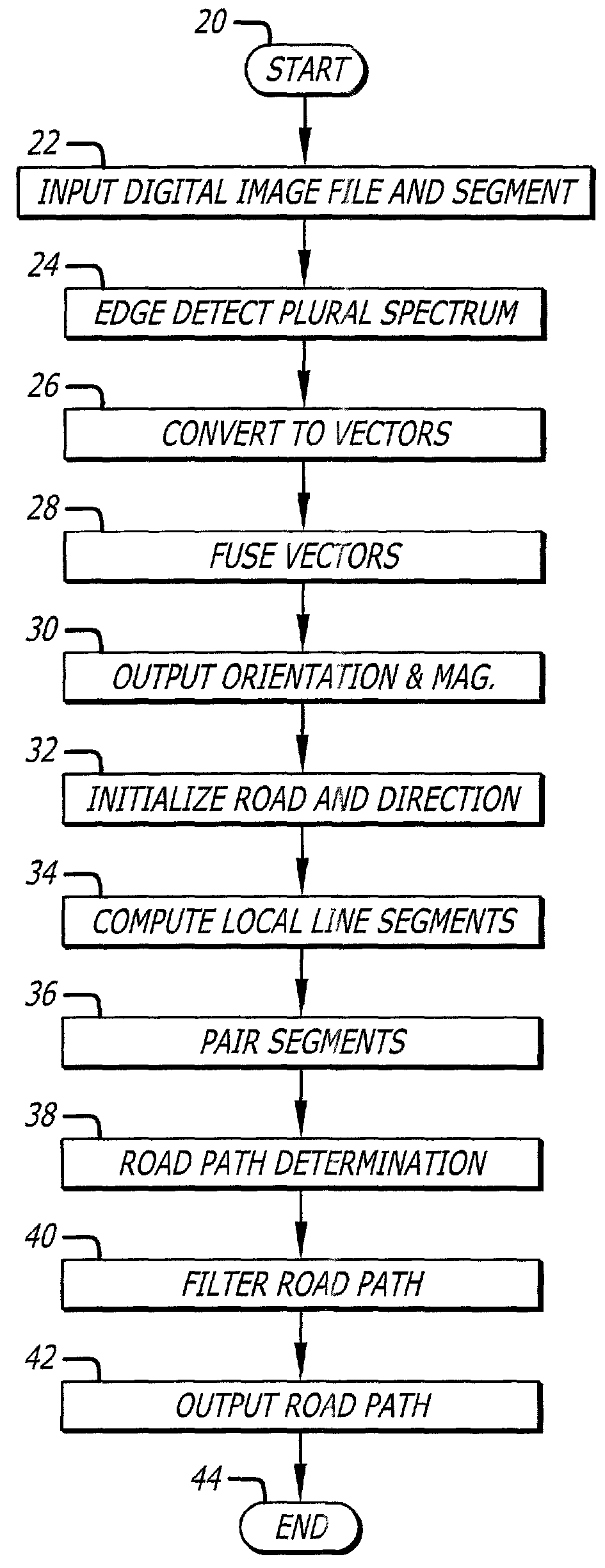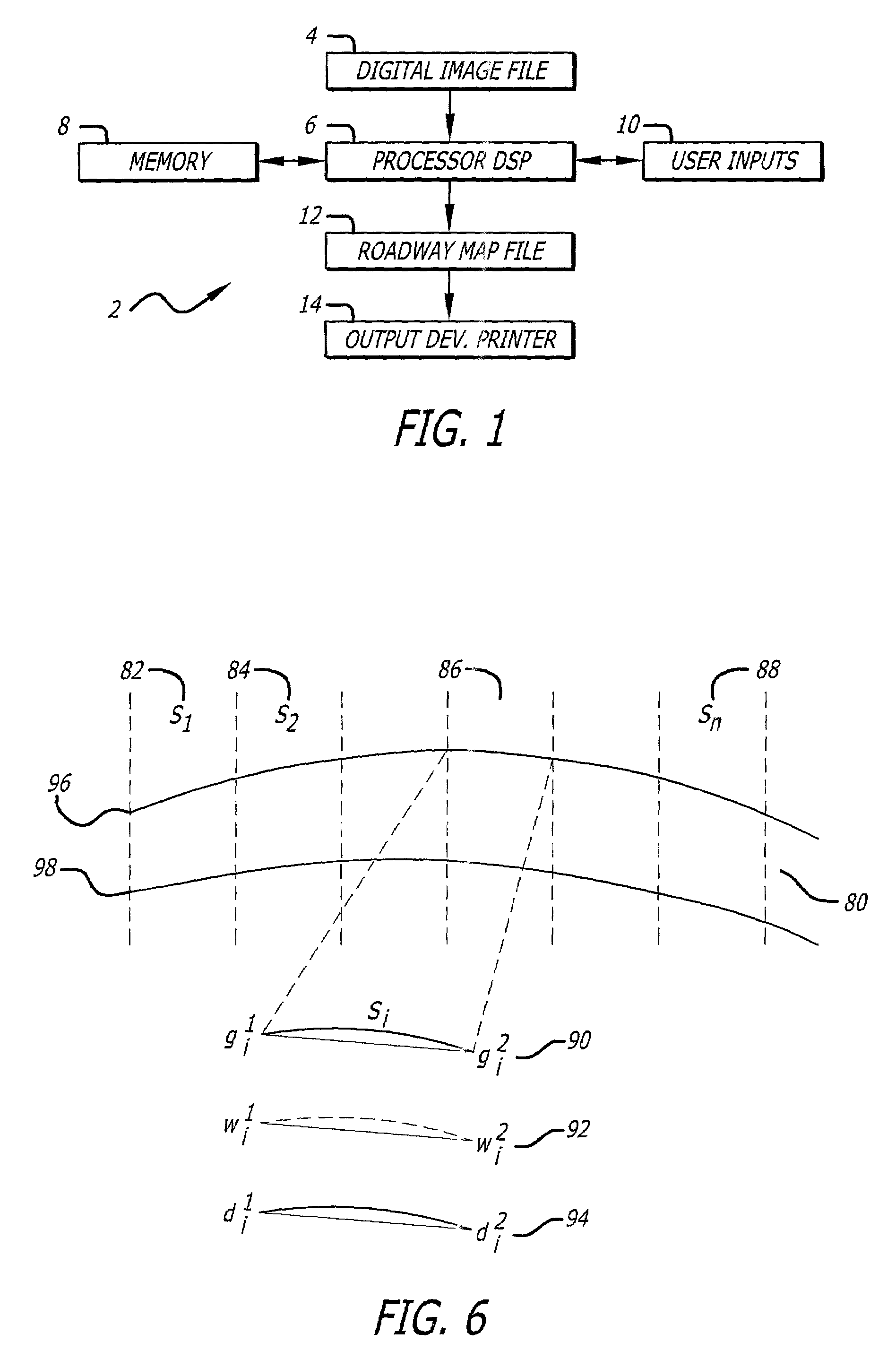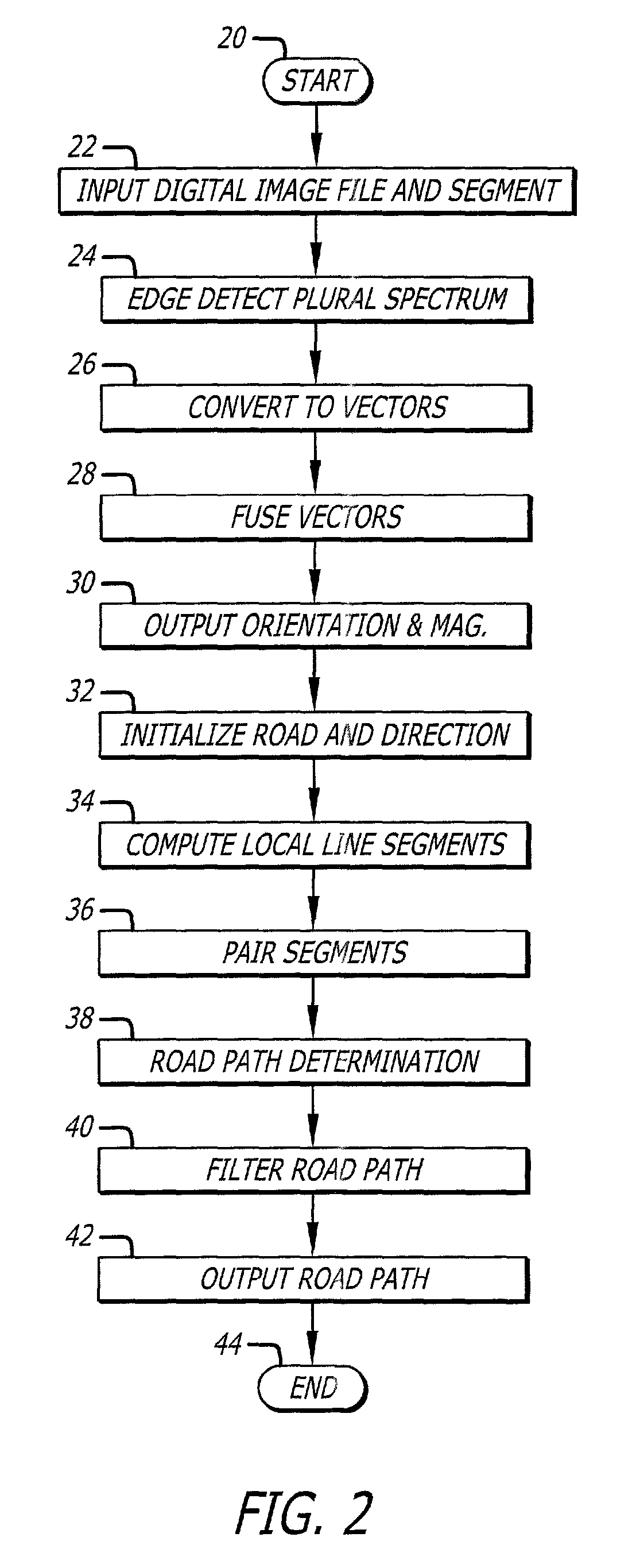Digital image edge detection and road network tracking method and system
a digital image and edge detection technology, applied in image enhancement, distance measurement, instruments, etc., can solve the problems of inability to handle multi-spectral images, prior art methods of doing this not handling multi-spectral images, and high complexity of segmentation-based operations, so as to reduce road path estimation errors and maximize the joint probability of parameters
- Summary
- Abstract
- Description
- Claims
- Application Information
AI Technical Summary
Benefits of technology
Problems solved by technology
Method used
Image
Examples
Embodiment Construction
[0027]Illustrative embodiments and exemplary applications will now be described with reference to the accompanying drawings to disclose the advantageous teachings of the present invention.
[0028]While the present invention is described herein with reference to illustrative embodiments for particular applications, it should be understood that the invention is not limited thereto. Those having ordinary skill in the art and access to the teachings provided herein will recognize additional modifications, applications, and embodiments within the scope thereof and additional fields in which the present invention would be of significant utility.
[0029]The present invention teaches a system and method that improves the accuracy of orientation estimates of various directional edge and line (hereinafter referred to generically as “edge” or “edges”) detectors used in image analysis applications, and, applies the edge detection information to a road path tracking process. The present invention al...
PUM
 Login to View More
Login to View More Abstract
Description
Claims
Application Information
 Login to View More
Login to View More - R&D
- Intellectual Property
- Life Sciences
- Materials
- Tech Scout
- Unparalleled Data Quality
- Higher Quality Content
- 60% Fewer Hallucinations
Browse by: Latest US Patents, China's latest patents, Technical Efficacy Thesaurus, Application Domain, Technology Topic, Popular Technical Reports.
© 2025 PatSnap. All rights reserved.Legal|Privacy policy|Modern Slavery Act Transparency Statement|Sitemap|About US| Contact US: help@patsnap.com



